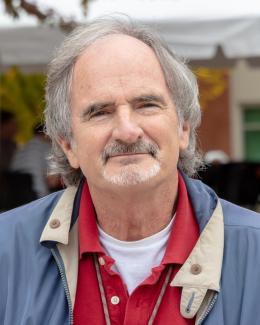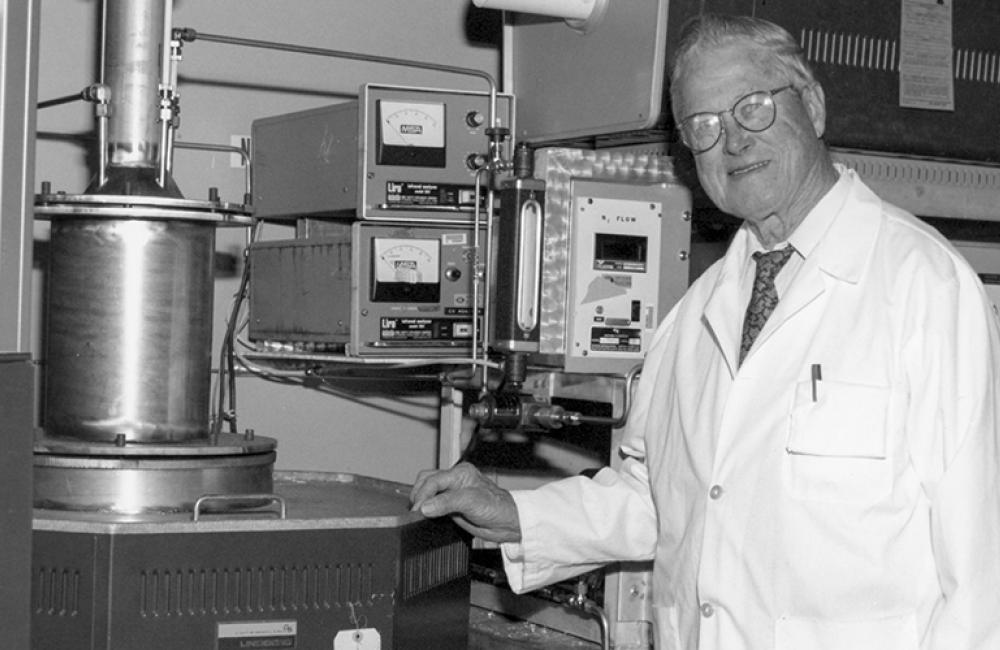Young chemist George Parker guessed his way to a Manhattan Project role.
In early 1943 young chemist George Parker landed a job at Indiana Ordnance, run by E.I. Dupont de Nemours Co., and took a night class taught by a Purdue University professor who had just returned from a trip to the University of Tennessee.
"He said that he had just come from Knoxville where he visited UT's engineering and physics departments and was amazed to see four Nobel laureates in one group," Parker said. (Parker himself had been a graduate student at UT, and decades later speculated the four Nobels were Arthur Compton, Harold Urey, E.O. Lawrence and Sam Allison.)
The professor went on to say a project was beginning near Knoxville that might have something to do with them being there. In fact, someone at UT put a note on a blackboard: "What's going on at the Clinton site?"
"The professor said that there were all kinds of wild guesses listed under it, such as chemical warfare," Parker recalled. One speculation, though, hit home with Parker -- "uranium energy." An article in Physical Review described German scientists' fissioning of uranium by exposing it to neutrons, yielding a very high energy content.
"I immediately associated it with the blackboard guess," Parker said.
Parker, who was a chemical sciences researcher at ORNL for more than a half century, recounted his early career days at the beginning of World War II in an interview published in early 1993.
Fifty years earlier Parker had been communicating with the draft board in his hometown of Johnson City, Tenn. They advised him to get a job more strategic to the war effort if he didn't want his new career interrupted by military service.
DuPont, in the meantime, had begun to transfer employees in a very secretive way. "Nobody knew or would say where they were going or what they were going to do," he said. He also heard about an acquaintance who had been assigned to the University of Chicago.
Parker, in a remarkable display of gumption, wrote a letter to the University of Chicago saying he believed the university was working on an important defense effort, and he "would like to be in on it."
A few days later Parker received a telegram: "Come up for an interview and be prepared to stay." He resigned from his job and left for Chicago. At the university he met with staff from the "Metallurgical Project Laboratory" and was interviewed by people he later discovered were FBI and military intelligence agents.
"They were extremely interested in what I knew," Parker recalled. At any rate, they told him his guesses were wrong but they had a job for him, isolating trace fission products from the St. Louis cyclotron's shielding.
After he was hired he was told the agents were amazed at how dead-on he was about the secret project.
Parker was assigned to a lab next to the Stagg Field squash court, where Enrico Fermi and others had assembled a graphite array that became the first nuclear reactor, CP-1, for Chicago Pile-1. His first uranium extraction lab was in a locker room adjacent to the court's balcony. "I would walk out and look at the pile any time," he recalled.
CP-1 had been shut down and a better one was being built somewhere. Parker found out where when he was transferred back home to Tennessee, to Clinton Laboratories. He boarded a train to Knoxville, checked in to a personnel office set up in the L&N station and was directed to a bus bound for guest housing at the Oak Ridge site. When the bus arrived in Oak Ridge, he hopped out and sank in mud almost to his knees.
"People who were knowledgeable wore high boots," he recalled. Muddy boots remain an Oak Ridge icon.
Parker recalled ORNL's earliest days. He met some "strange and wonderful" individuals, including a genius Knoxvillian who built a radial engine with tin cans. They rode to work on "atrocious buses" or woodstove-equipped "cattle cars." He married, and the Parkers babysat for the Comptons. He knew Fermi, Urey and Edward Teller informally, as well as Robert Oppenheimer, Leo Szilard and Gen. Leslie Groves.
He was shown some of the world's first milligram quantities of plutonium by a microchemist from Berkeley, Louis Werner.
"He asked me to look at a small amount of blue-green liquid under a microscope. It was the world's first visible quantity of plutonium made in the Oak Ridge reactor, and from that tiny amount they made a lot of extremely important measurements."
Parker's wartime work, which was the separation of radioactive materials for biological damage safety studies, was in his view the basis of the medical radioisotope industry. The Graphite Reactor generated biologically significant carbon-14, idodine-131, phosphorus-32 and sulfur-35, and they were separated in the Bldg. 3026 hot lab.
Three quarters of a century after George Parker's participation in its beginnings, isotope production has returned as a major ORNL initiative. His educated-guess answer to the blackboard question at UT had historic and enduring ramifications, for Parker and ORNL alike.
C.J. Barton Jr., who worked with Parker, wrote a heartfelt eulogy after Parker's death in 2007. Read it here.



